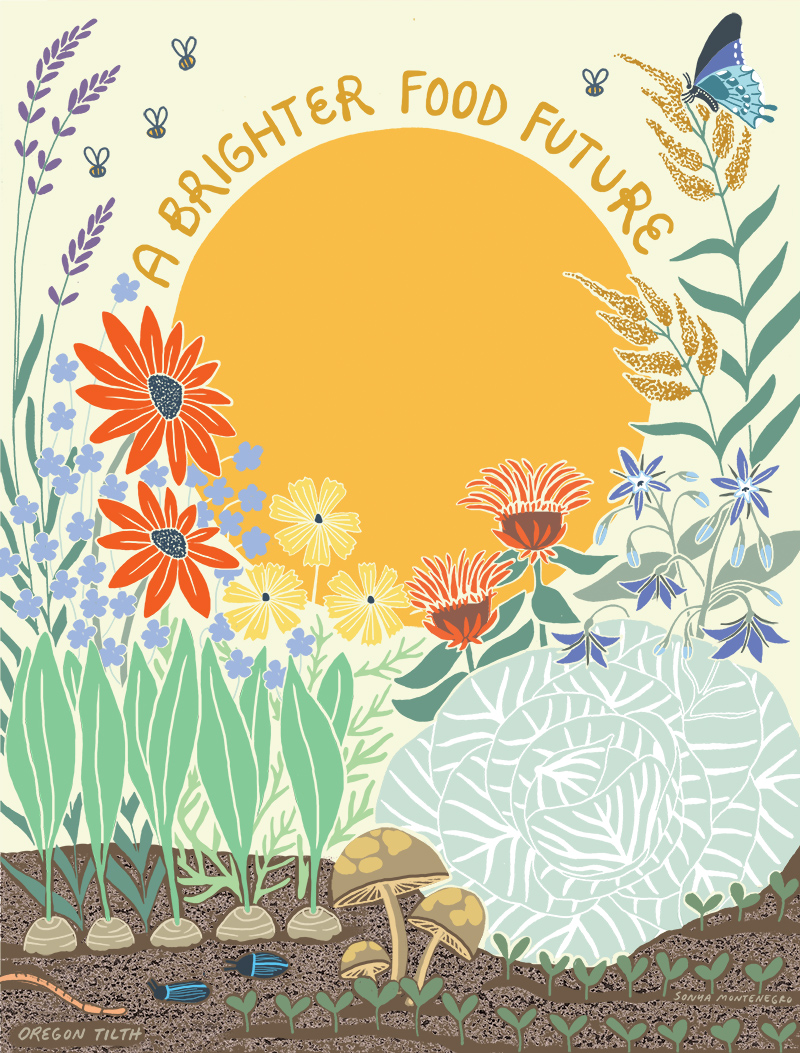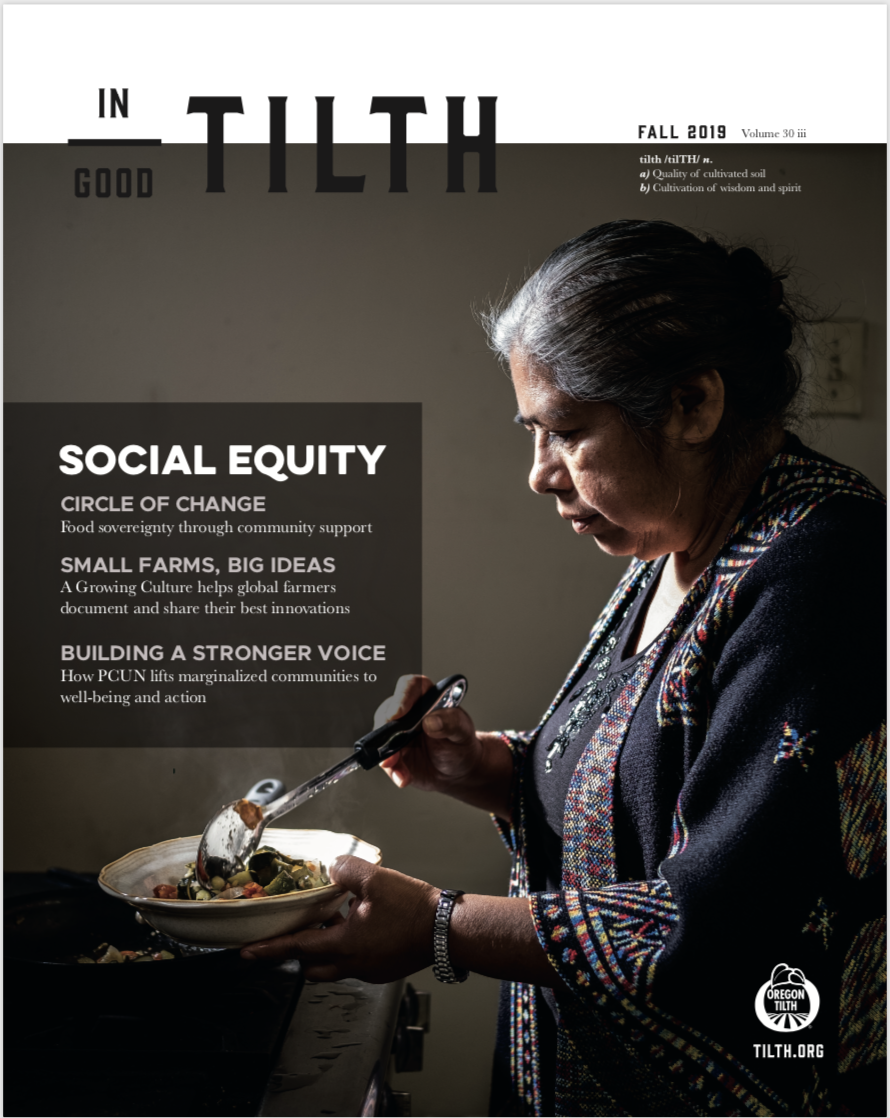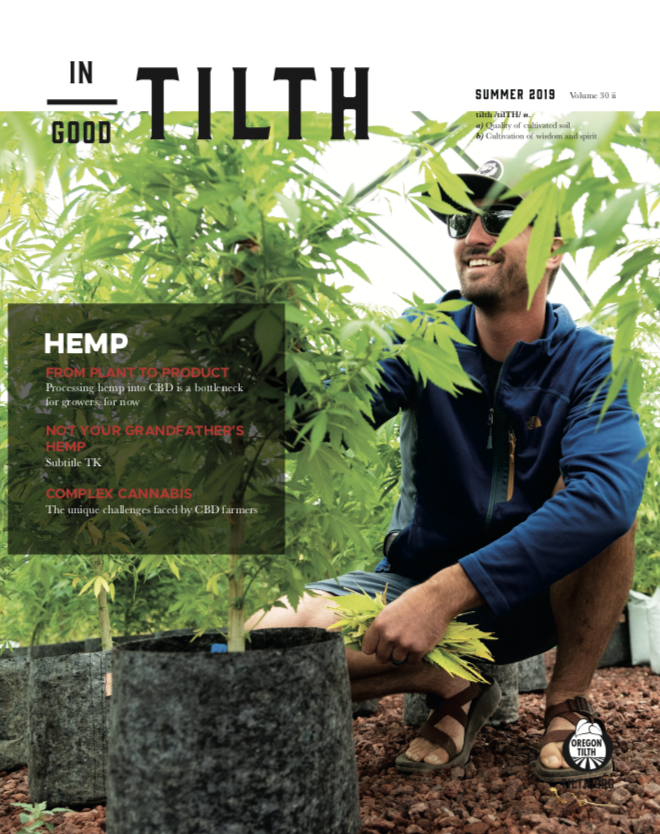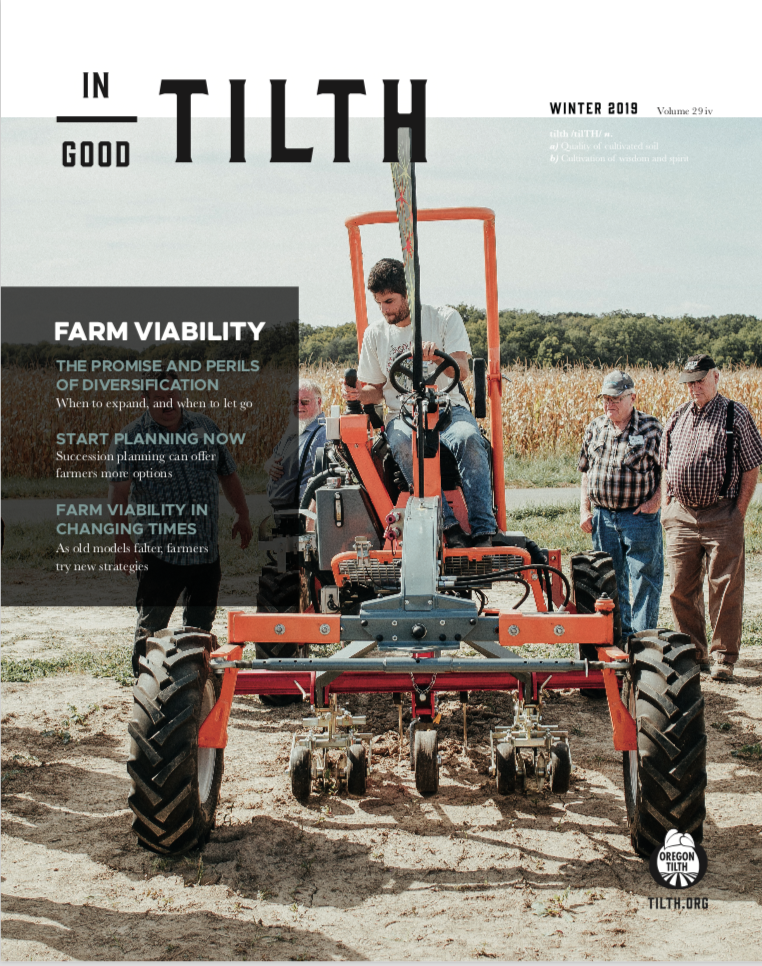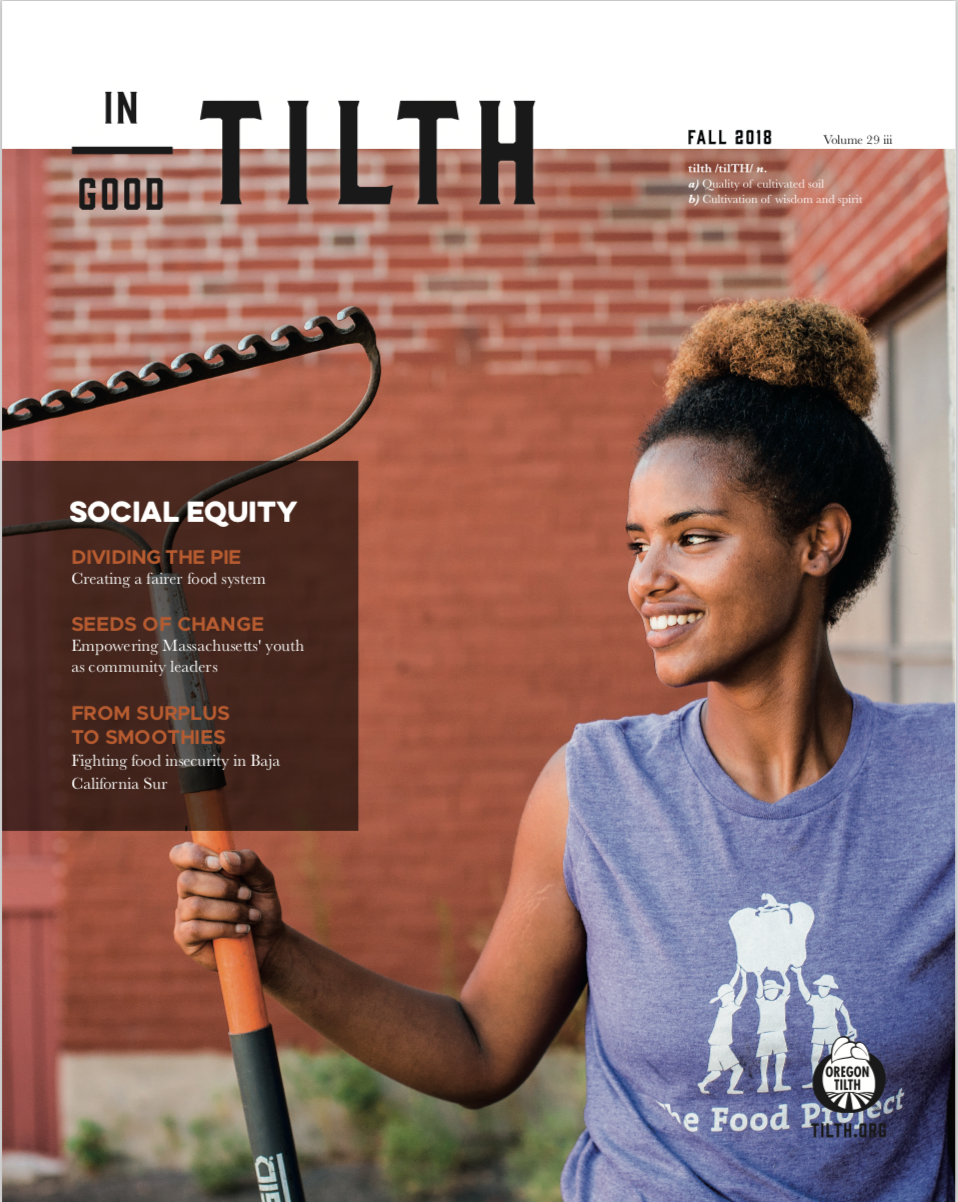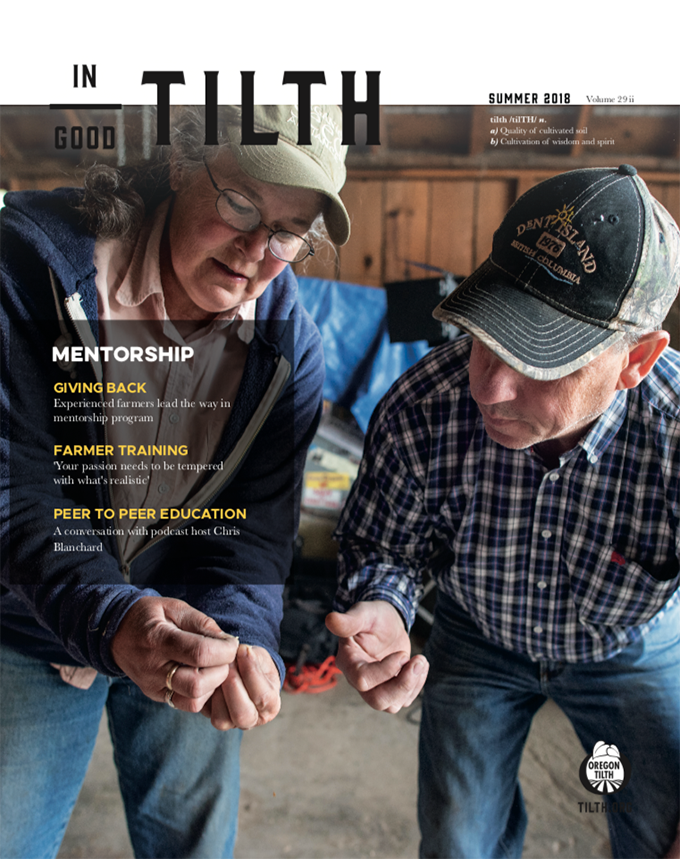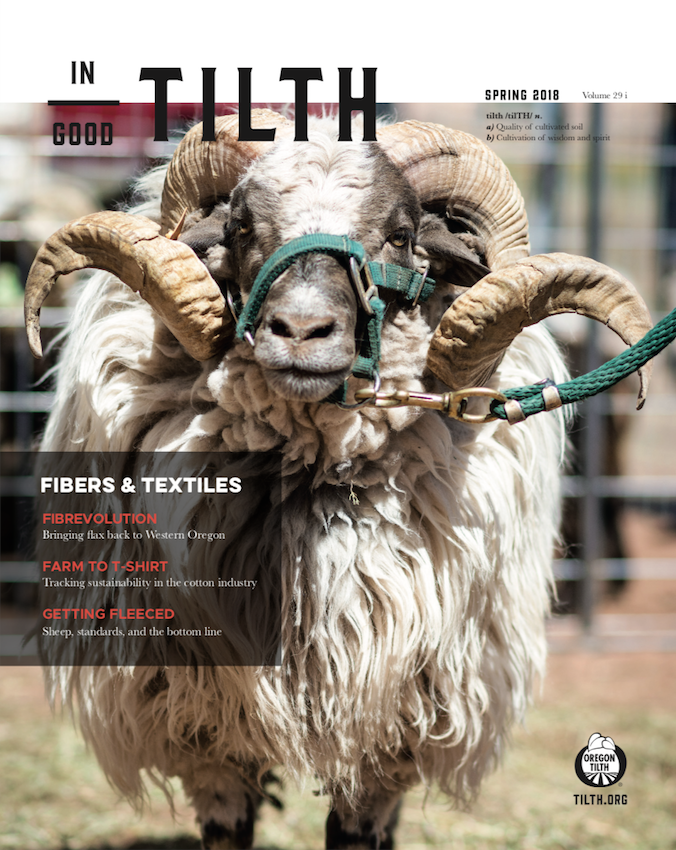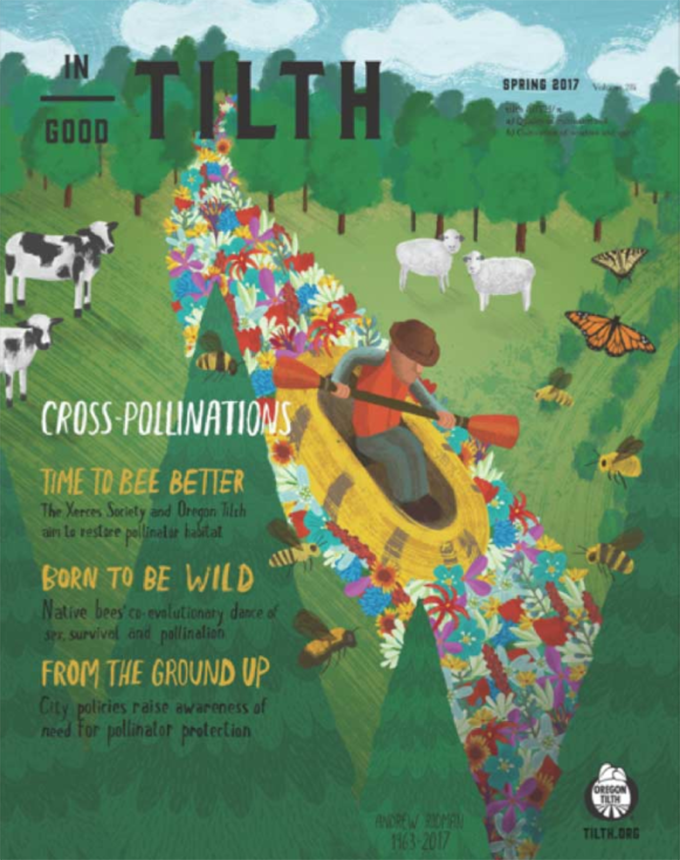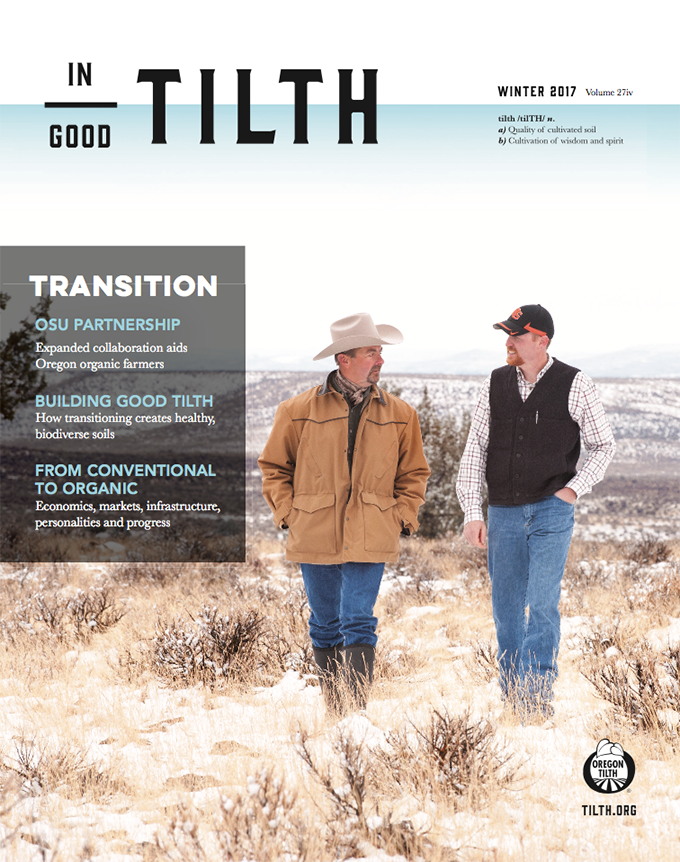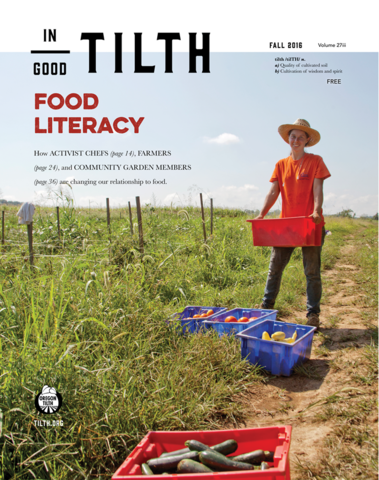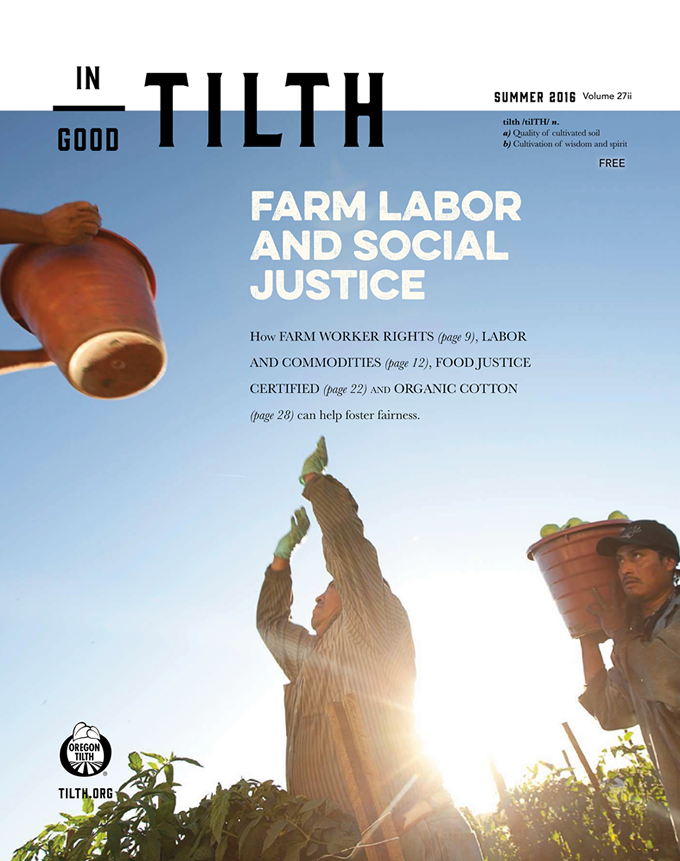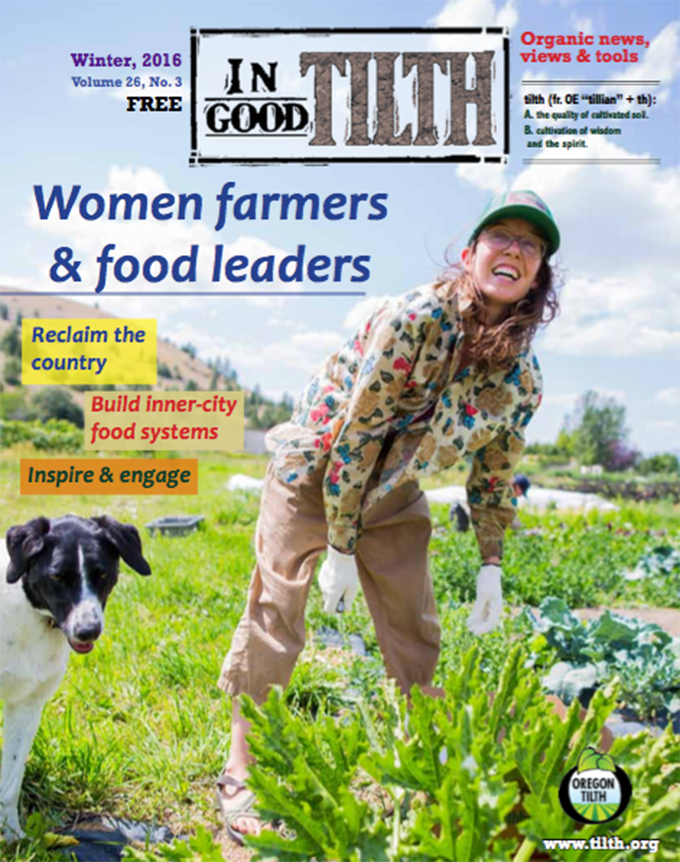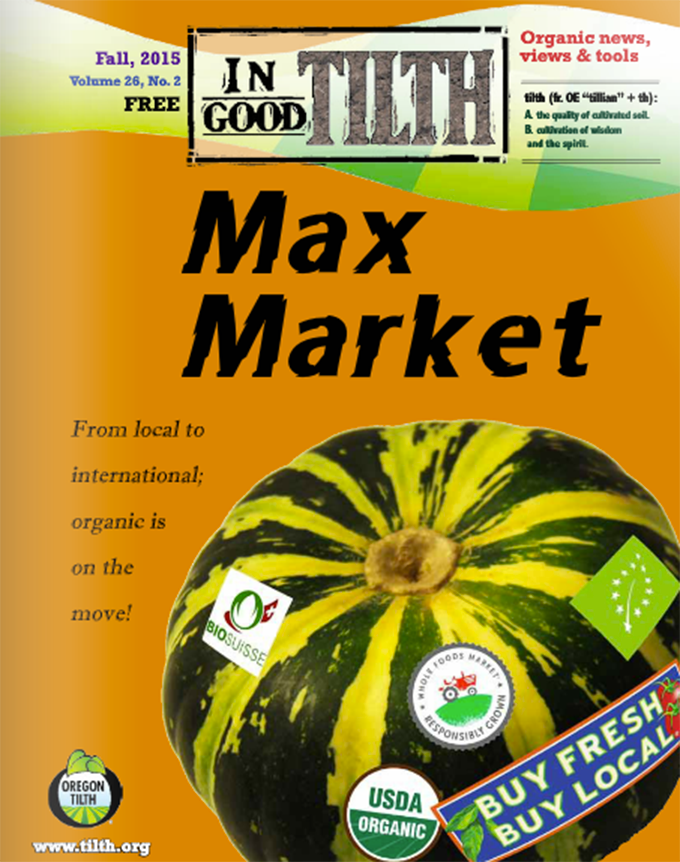Tall, gnarled fruit trees, some of them over a 100-years old, shape the idyllic landscape along the steep slopes of the Swabian Alps. As do the church spires of the villages and small towns that are dotted across this rural, agricultural area, just 25 miles to the west of Stuttgart in Germany. Jörg Geiger comes from one of these “towns under 2,000,” called Schlat. The local inn, Gasthof Lamm, has been run by the Geiger family since the 17th century. Geiger was just 23 when he took over the management of the restaurant. Traditionally, the family grew most of the vegetables needed on their own land; they raised pigs and kept an orchard with a large variety of heritage fruit trees, pears, apples, plums and cherries. What didn’t go into pies, puddings and cakes was made into spirits, distilled in the vaulted cellar of the restaurant. It was an easy choice to make the Lamm into a farm-to-table restaurant. But Geiger’s real obsessions were the meadow fruit varieties that have been grown in the area for centuries. His favorite is the “Stuttgarter Gaishirtle” because it was a young goat herder from Stuttgart who discovered this tiny, green pear variety. It has no shelf life but goes from rock hard to the best pear you ever tasted to a fermenting mess under the tree within days. It’s one of dozens of varieties, some sweet and aromatic, some flavorful, sharp and full of tannin. The “Champagner Bratbirne” pear also was widely grown in Swabia in the 18th century, because the local ruler loved the sparkling wine that could be made from it and served vast quantities at his court. Geiger revived the tradition of producing a sparkling wine using the méthode champenoise, and the “Champagner Bratbirne” pear today is on Slow Food International’s Ark of Taste produce list.
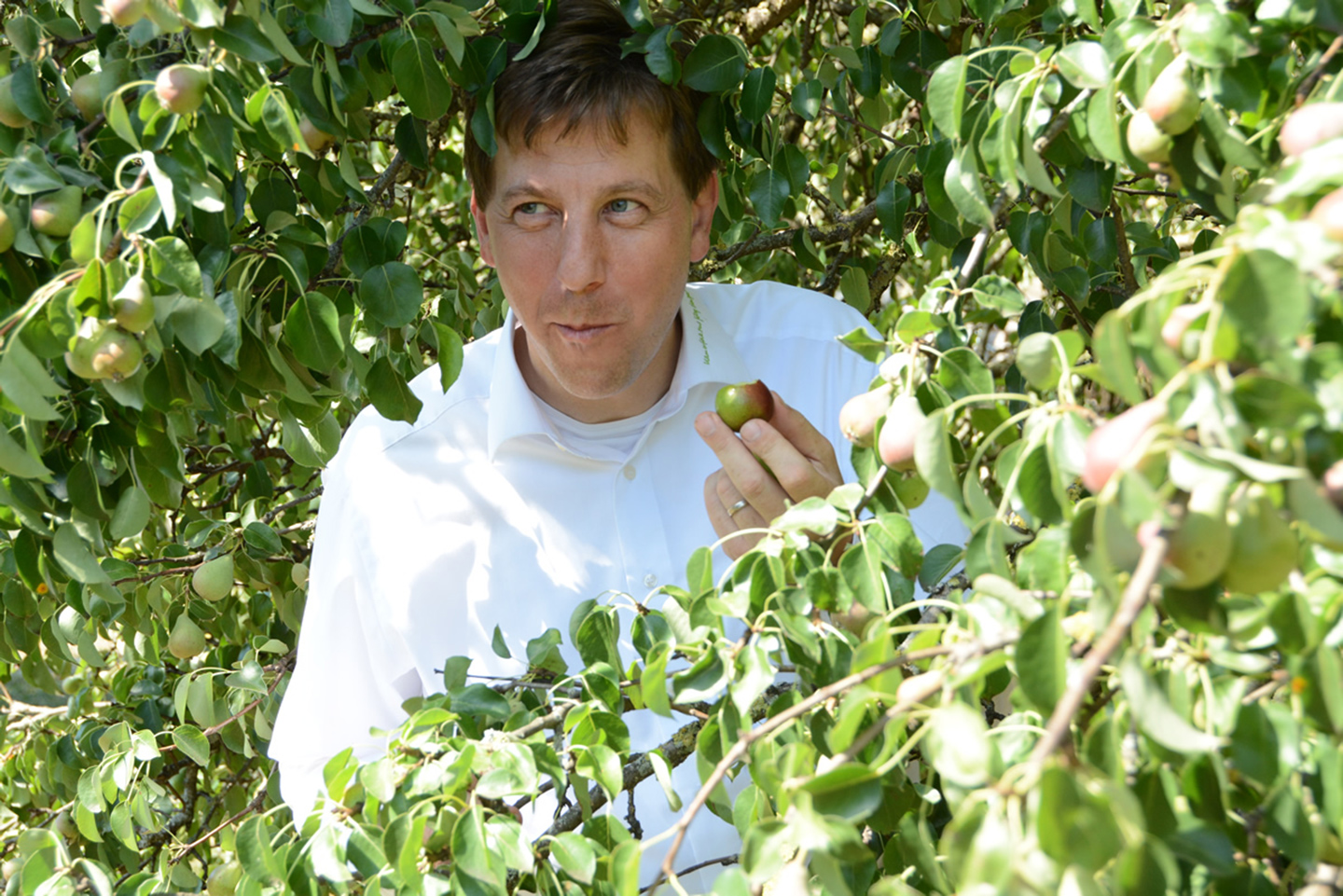
Climate and soil are perfect for growing fruit in this area, but most of the slopes are too steep for modern orchards with dwarf varieties that can be machine harvested. Much of the land can only be used to graze sheep and sometimes cattle which enjoy resting in the shade of the tall, old fruit trees. For Geiger, it’s not about preserving this tradition for its own sake. What he treasures is the wealth of flavors inherent to the heritage fruit varieties, the herbs, flowers and shrubs that grow in the meadows and the biodiversity from birds to butterflies. With so many cider and pear varieties using the glut to produce juice seemed obvious. But inspired by the superb sparkling wine that can be made from the “Champagner Bratbirne” pear, Geiger started to experiment. Fruit juice can be delicious, but it doesn’t go well with the menu of a high-end restaurant.
How about creating a drink that rivals sparkling wine in all its subtle taste qualities but without alcohol? The trained chef understood that while heritage fruit juice produces a lot of flavor on the tongue, it can be too sweet and often lacks what sommeliers call “the nose” and “the finish.” So he started to combine single variety heritage pear and apple juice, some of them harvested unripe to lower the sugar content while keeping the intensity of the flavors. To complement, enhance, refine or deepen these flavors he started to add extracts from fresh herbs, flowers, leaves, grains or wood. Stored in huge steel tanks, the mixture is then slowly carbonized over a two-day period to achieve the tiny bubbles that rise to the surface of a glass like a string of pearls. The result is a non-alcoholic sparkling wine (based on apple and/or pear juice) that matches any alcoholic version (based on grape juice) in fragrance, subtlety of flavors, bouquet and finish. Geiger has composed more than 30 such “Priseccos.” There are unripe meadow-fruit apple with gooseberry and Douglas fir tips, a single-variety “Bohnapfel” apple with celeriac and sesame, combinations with cucumber, bell pepper, lad’s love, yarrow, beetroot, black currant twigs, jasmine, hawthorn and even roasted oyster shells and sea salt. It sounds crazy, but the resulting taste ranges from fresh minty or grassy to blossomy, spicy or earthy. There are bitter, tannin notes and usually just a hint of sweetness. Most of the herbs, blossoms and leaves Geiger uses come from the fruit tree meadows or woods nearby. He pays very good prices for single-variety heritage fruit delivered to Manufaktur Geiger by more than 600 local farmers and small holders. Collecting or growing herbs and other plants also provides additional income. Over the past 20 years, farmers cut down many of their meadow fruit trees, because their fruit could not compete with the perfect looks of supermarket apples and pears. Now it makes economic sense again to look after the trees and maintain meadows and hedges. And with it, too, comes a sense of pride in the richness of tastes and variety this region can produce and the biodiversity and the beauty of these fruit meadows with those old, tall, magnificent trees.
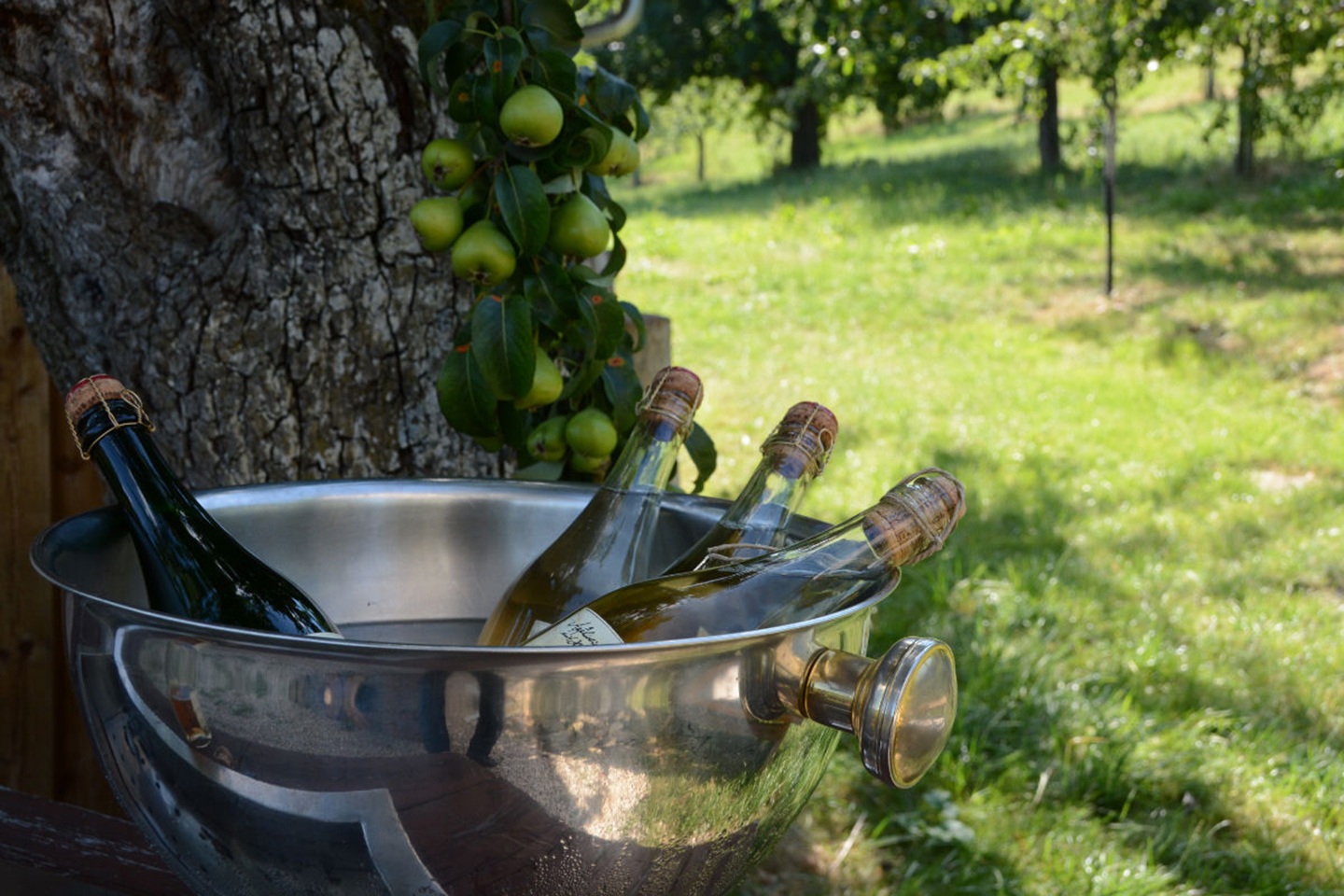
There just are not enough trees anymore and planting new ones is easier said than done. Apples and pears are not true to seed and are propagated by grafting a twig of an existing tree/desired variety onto a rootstock. Strong rootstock makes for deep-rooting, very tall trees. They are more drought and often more disease resistant, but it takes five to seven years until the first fruit form, up to 15 to get good yields. The slow growth and smaller fruit size make for a richer, deeper flavor. Commercial orchards have been working with weak rootstock for decades: the trees give high yields of big, evenly shaped (though less aromatic) fruit after only two to three years, and they can be machine harvested. The trees need to be irrigated and the crop is sprayed multiple times throughout the year, but they nevertheless are ideal to produce fruit for consumers who know a handful of varieties at best and for supermarkets that demand visual perfection with a long shelf life. When Geiger decided to plant new trees, he found out that the nurseries in the area had long since stopped producing strong rootstock–or OHxF97 (Old Home crossed with Farmingdale), to use the correct horticultural term. He started contacting nurseries all over Germany, in other European countries and the U.S. He finally got lucky in the Willamette Valley of Oregon. Despite red tape, customs and paperwork — in 2007 he ordered 3,500 OHxF97 and is now successfully growing over 20 different heritage meadow fruit varieties. It will be a few years until Geiger will see really good yields, but nine years on, it’s obvious that the trees from the Willamette Valley are happily growing roots in Swabia.

